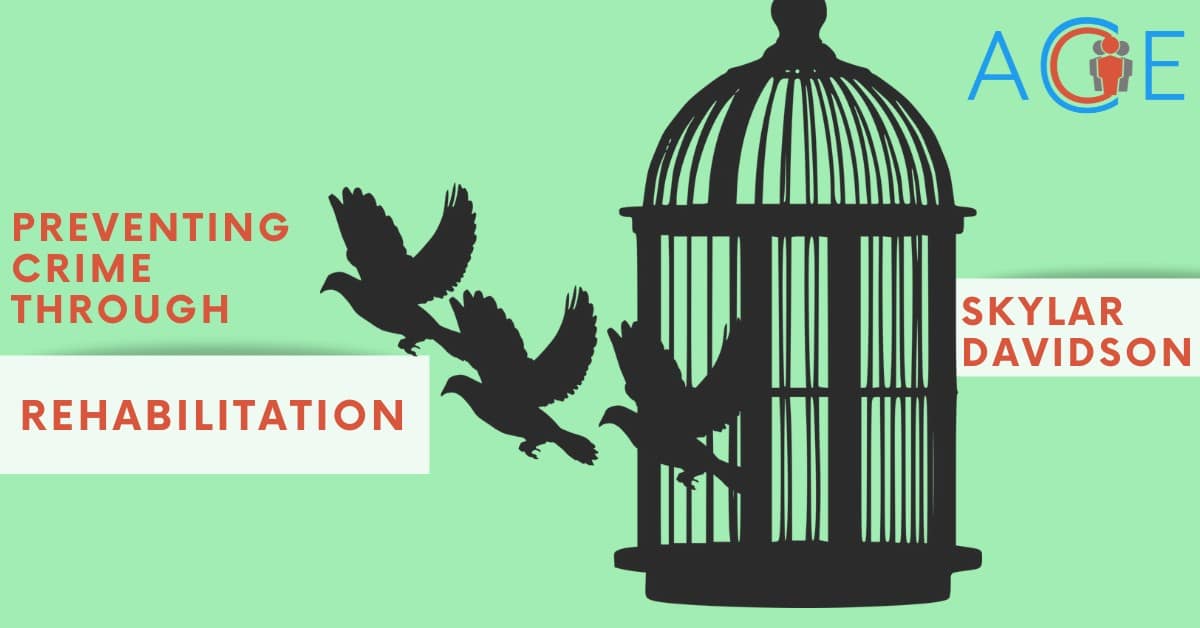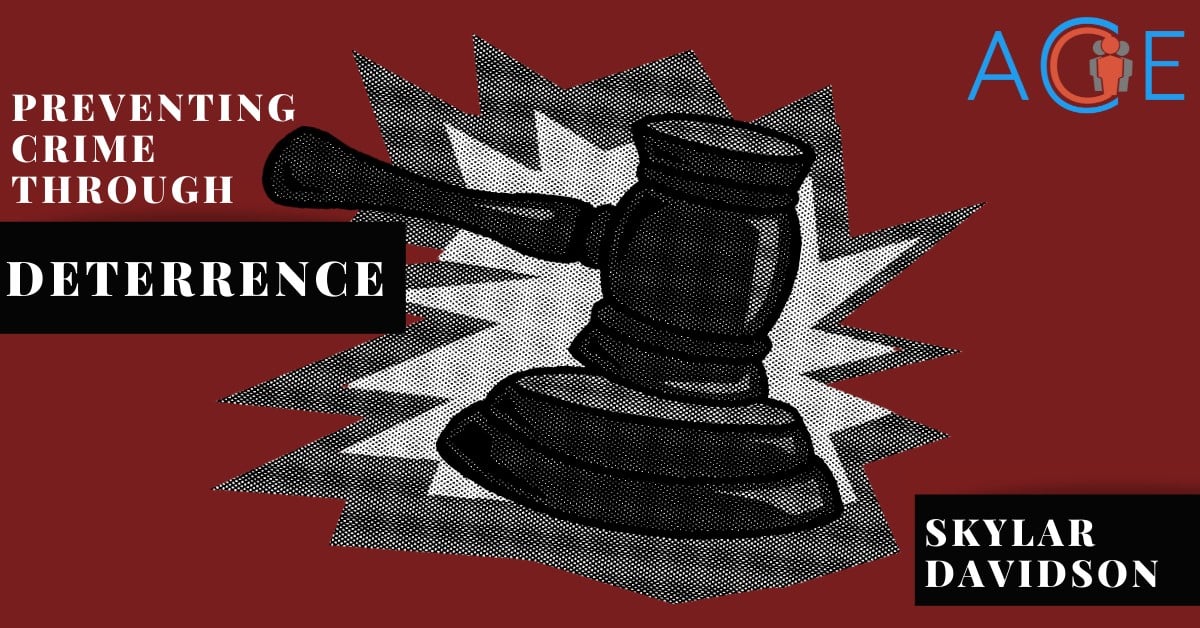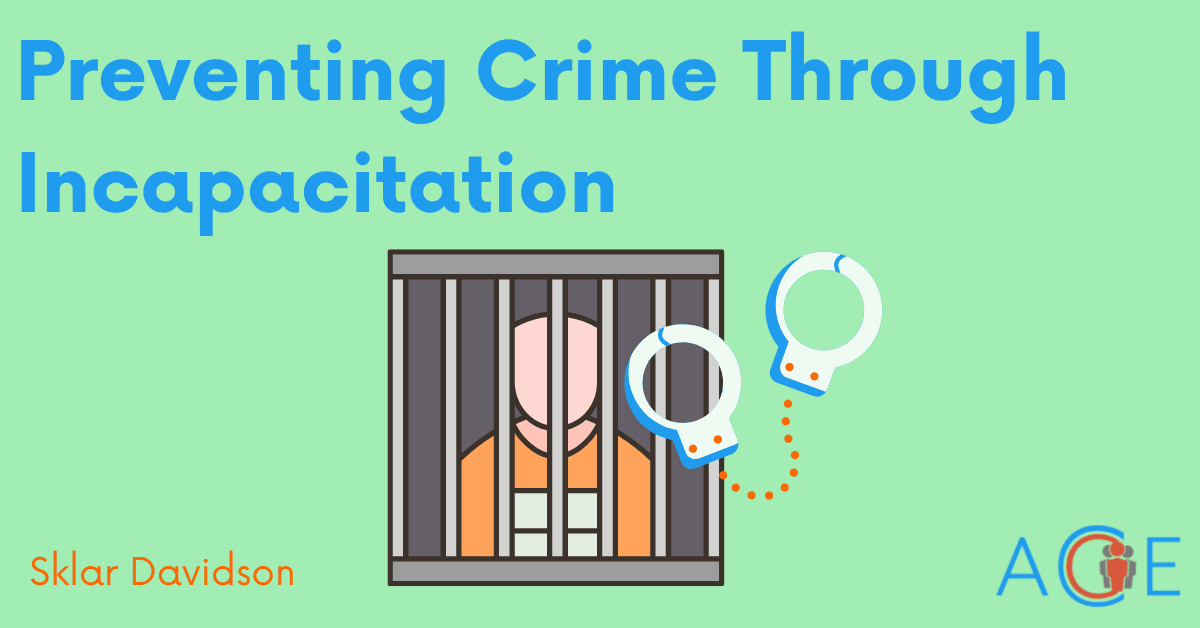What is Rehabilitation Theory and how does it relate to crime prevention?
Rehabilitation Theory is a forward-looking theory, similarly to Deterrence Theory and Incapacitation Theory, where punishment through rehabilitation is justified through its ability to control crime. In contrast to Deterrence Theory and Incapacitation Theory, however, Rehabilitation Theory positions punishment as a mechanism to improve an individual’s character or behavior, which would then reduce the likelihood of recidivism. The word “punishment” often has a negative connotation, but Rehabilitation Theory gained traction in the United States through a concept known as the Rehabilitative Ideal, which positions punishment as a way for corrections to serve higher social purposes, notably the reduction of recidivism.
The Rehabilitative Ideal follows a positivist school of thought where participation in crime is the outcome of processes such as environmental factors, including family upbringing and social conditioning, or genetic factors. Throughout the early 20th century, the Medical Model of Intervention became the baseline rehabilitative treatment for individuals who commit crimes. People who commit crimes were seen as products of socio-economic or psychological forces beyond their control. Crime became a “sickness,” where the goal of rehabilitative treatment was to “cure” individuals, which would in turn reduce recidivism. Proponents of the Medical Model point to the subsequent introduction of psychiatrists, psychologists, and clinical social workers into prison settings. However, advocates for individuals in prison ultimately brought the Medical Model’s failures to light, pointing to the invasive and illegal procedures taking place in correctional institutions such as psychosurgery, electroconvulsive therapy, and chemical castration performed under the guise of “rehabilitation.”
Rehabilitation Policy in the US Before Martinson
The use of rehabilitation as a form of punishment and crime prevention emerged in the late 19th century in penitentiaries at a time when people in prison were responsible for their own rehabilitation. The primary rationale behind crime was thought to stem from an individual’s inability to “to lead orderly and God-fearing lives.” However, penitentiaries soon became reformatories, which aimed to rehabilitate offenders through educational and vocational training, though they still utilized physical punishment.
The 1936 Cambridge-Somerville Youth Study was one of the first experiments that operated under the guidance of the Rehabilitative Ideal. The program aimed to prevent delinquency, and targeted under-priveleged boys by offering individual counseling through activities and home visits. Such attempts to utilize rehabilitation as a form of crime prevention would inform the intensive use of the Rehabilitative Ideal throughout the 1950s and 1960s in public policy.
The Prisoner Rehabilitation Act of 1965 authorized furloughs, a system of work release, and standardized the use of community residential treatment centers for adult federal prisoners. The act emphasized the importance of reforming correctional work to create improved educational and vocational training programs for people in prison. Attorney General Nicholas deB. Katzenbach verbalized his support of the Prisoner Rehabilitation Act of 1965 by stating that the policies would amplify “the growing trend in the correctional field to augment inherently limited institutional resources with potentially greater community resources.” The law contained three major provisions:
- The Attorney General would have the authority to transfer individuals who were in prison to residential community treatment centers (more commonly known as Halfway Houses);
- The Attorney General can give individuals in prison brief periods to leave for emergencies or purposes relating to release preparations; and,
- The Attorney General can allow people in prison to work in private employment or participate in community training programs while remaining in prison.
The aim of the Prisoner Rehabilitation Act of 1965 was to codify the federal government’s dedication toward creating rehabilitative programs for people in prison in order to reduce crime in the United States.
The Martinson Report: “Nothing Works”
While the United States gravitated toward rehabilitation as a form of crime prevention throughout the 1950s and 1960s, everything changed in 1974 when Robert Martinson released his paper titled, “What Works? – Questions and answers about Prison Reform,” more commonly referred to as “The Martinson Report.” Between the years of 1960 and 1975, reported rates of robbery, aggravated assault, rape, and homicide increased by 263%, and property crime rates, specifically burglaries, increased by 200%. Crime was at an all time high in the United States, which led sociologists like Martinson to explore the effectiveness of rehabilitation as a form of crime prevention in America.
In Martinson’s research involving over two-hundred studies, he concluded that there was little reason to believe that rehabilitation reduces recidivism. Martinson addressed forms of rehabilitation such as education and vocational training, individual counseling, transforming the institutional environment of rehabilitation, medical treatment, and decarcerating individuals in prison, providing evidence for why he believed such measures do not work to prevent crime. Criminological reports leading up to the 1970s that found no significant treatment effects for prison rehabilitation programs coupled with Martinson’s Report ultimately coined the phrase and conclusion that “nothing works” in rehabilitating people in prison and that prison sentences should not include opportunities for rehabilitation.
Because Martinson’s Report arrived during a period of intensified rates of crime and recidivism in the United States, policymakers from all political backgrounds began to lean into the “get tough on crime” era. Martinson’s message was attractive to liberals, since it could be used to argue against incarceration and indeterminate sentencing, as well as conservatives, who demanded tougher handling of people who commit crimes. The political right and left, in addition to academics, found common ground through Martinson’s “nothing works” mentality, ultimately leading to the decimation of rehabilitative prison programming as a form of crime prevention in US public policy.
Rehabilitation Policy in the US After Martinson
The Martinson Report, along with the overall agreement of policymakers and academics, culminated in the decline of the Rehabilitative Ideal and the rise of “new punitiveness.” As a result, the United State’s current criminal justice system is more punitive, where incapacitation is the most common form of crime prevention in US policy, rather than rehabilitation.
The 1989 Mistretta v. United States case ultimately reversed the Prisoner Rehabilitation Act of 1965, as well as any efforts by the federal government to implement rehabilitation as a way to prevent crime. Under the Sentencing Reform Act of 1984, Congress eliminated indeterminate sentencing at the federal level and created the United States Sentencing Commission. The Commission was intended to address the discrepancies in sentencing by federal court judges by creating sentencing guidelines for all federal offenses. Mistretta argued that the Sentencing Reform Act of 1984 violated the delegation-of-powers principle in US constitutional law by giving the Commission “excessive legislative powers.” However, the Supreme Court upheld the federal sentencing guidelines implemented by the Commission, which removed rehabilitation from serious consideration when sentencing people who committed a crime. In other words, the guidelines established by the commission were to be applied in all scenarios, ignoring factors such as responsiveness to treatment, person and family history, previous efforts to rehabilitate oneself, or alternatives to incapacitation.
In 2008, Congress passed the Second Chance Act, which sanctioned federal investment in strategies to reduce recidivism and increase public safety using Rehabilitation Theory. Allegheny County, PA established reentry programs for people who were in prison that connected individuals with education, job readiness, treatment, and other services. Iowa also established pre-release planning for individuals nearing the end of their prison sentences. Overall, there have been few efforts from the federal government over the past few decades to implement reforms rooted in rehabilitation to reduce recidivism. A 2017 Department of Justice report on the Federal Bureau of Prison points to several policy goals focusing on rehabilitation as a form of crime prevention such as identifying individual’s criminogenic needs, developing standardized, evidence-based programs to reduce recidivism, ensuring that people who are in prison receive substance abuse treatment, and helping people in prison maintain family ties.
Effectiveness of Rehabilitation on Crime Prevention and the Impact on People of Color
Although Martinson later retracted many of his conclusions regarding rehabilitation programs, and his original report was found to include major methodological flaws, the academic community and policymakers embraced his views on rehabilitation as a form of crime prevention. Contemporary research demonstrates that rehabilitation programs reduce recidivism by about 10%. The risk-need-responsivity (RNR) model uses risk assessment tools to provide rehabilitative treatment to individuals with the highest risk of committing another crime. In a study focusing on the effects of RNR efforts on Ohio’s halfway house programs, the recidivism rate of high-risk individuals lowered by 20%. The Boston Reentry Initiative (BRI) serves as an example of how community partnerships can also reduce recidivism. The BRI provides a family member or mentor to meet each released person when they leave prison, and researchers found that participants had a rearrest rate 30% lower than the control group. Rehabilitation has the capacity to lower recidivism rates when policymakers invest in mental health care, personalized education plans for individuals in prison, and ensuring that individuals leaving prison have job opportunities. People in prison who participate in education programs have a 43% lower chance of returning to prison than those who do not, and individuals who have a job when they are in prison are 24% less likely to recidivate.
More than 600,000 individuals are released from state and federal prisons every year, but within three years of their release, two out of three individuals are rearrested. Because one in three African-American men are imprisoned throughout their lifetime, compared to one in six Latino men and one in seventeen White men, rehabilitative measures, rather than deterrence or incapacitation, have the greatest potential to reduce the mass incarceration of people of color in the United States. However, rehabilitation programs, specifically during the peak of US Rehabilitative Ideal policymaking, were reserved for individuals deemed capable of reform by policymakers who mostly prioritize white people. As a result, any early sociological studies of prisons do not include people of color in prison, which means the impact of rehabilitation as a form of crime prevention on people of color was, and still is, largely unexamined.



